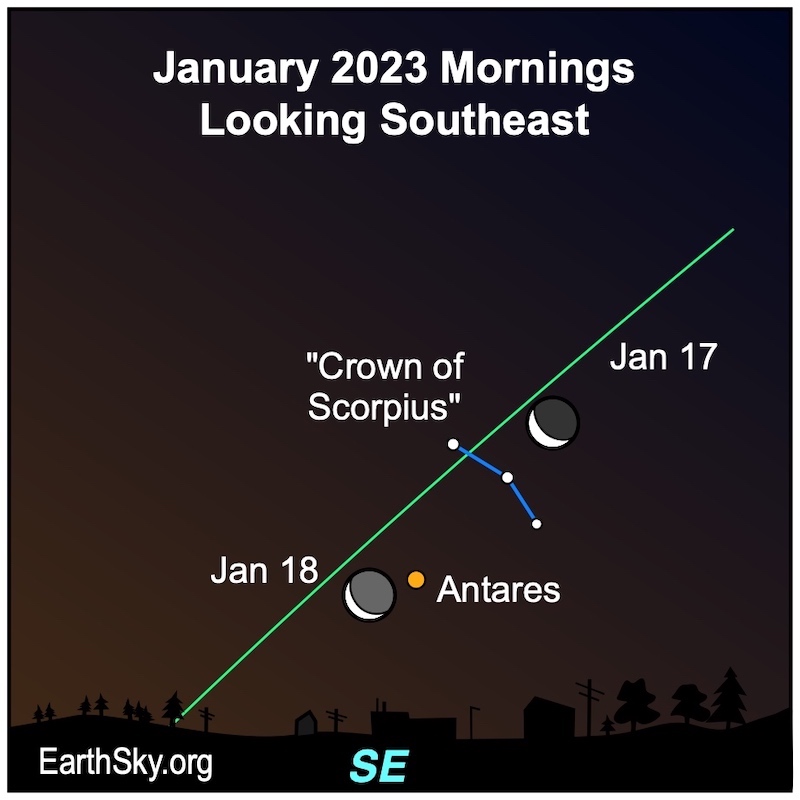
Moon near Antares
The moon makes a close pairing with Antares, the brightest star in Scorpius the Scorpion, on January 18, 2023. Before it does, it passes through the Crown of Scorpius on January 17. The Crown of Scorpius consists of three stars that mark the head of Scorpius the Scorpion.
Scorpius the Scorpion is one of the easiest constellations to see in the sky. That’s because it resembles a large fishhook or J-shaped figure.
Since the view of the stars, moon and planets varies by your position on the globe, we suggest you try Stellarium for a precise star chart for your location.
Antares is a massive and cool star
Without a doubt, Antares is a massive star – a red supergiant – in the final stages of its life. And it’s relatively cool, with a low surface temperature. Its surface temperature is about 6,100 degrees F (3,400 degrees C). That’s in contrast to our sun’s surface temperature of about 10,000 degrees F (5,800 degrees C).
Yet the star appears very bright to us. That’s because Antares is a truly enormous star. Its surface area – the surface from which light can escape this star – is gigantic. If you could place our sun and Antares side by side, you’d find Antares more than 10,000 times brighter than our sun. Plus it is over 700 times the sun’s diameter!
Stars in the Crown of Scorpius
The Crown of the Scorpion or Scorpion’s Head is a slightly curved arc of three stars: Acrab, Dschubba, and Fang.
Incidentally, the upper part of the Scorpion – Antares at the Heart, and the three stars at the Crown – are all part of a group of young stars known as the Scorpius–Centaurus Association. So these stars were likely born together from a single cloud of gas and dust in space. And they still move through space as a loosely associated group of stars.
Bottom line: Look for a waning crescent moon near Antares in Scorpius on the mornings of January 17 and 18, 2023. Also, the moon is near the Crown of Scorpius.
For more great observing events in the coming weeks, visit EarthSky’s night sky guide











